Today, June 21, is World Hydrography Day. Hydrographic offices in over 80 maritime nations observe this day every year, since 2005. It is our special day to tell the public what hydrography is, and how it is employed to make navigation safer. Simply, hydrography is the science we use to obtain the data needed to create nautical charts. NOAA’s 200-year history is proof positive that those charts – and therefore hydrography – are a national investment that pays off daily with navigation safety, efficiency, and coastal protection from accidents at sea.
But today’s observation of World Hydrography Day is more profound. It is personal to every person who works in or supports hydrography in the United States.
It was 153 years ago, to the day, that the U.S. Coast Survey experienced the largest single loss of life in our history. In the early morning hours of June 21, 1860, on stormy seas, the U.S. Coast Survey Steamer Robert J. Walker was hit by a commercial schooner when she was transiting from Norfolk to their homeport in New York, after surveying in the Gulf of Mexico. The ship sank quickly, and twenty crew members died. Another man died from his injuries the next day.

Today, we honored the lost crew members of the Robert J. Walker for their service to the nation.
The NOAA Ship Thomas Jefferson is currently working near where the Walker sank. They are taking a couple of hours to survey the area, with multibeam and sidescan sonar, as part of a NOAA Maritime Heritage effort to pinpoint the exact location and confirm the identity of the Walker wreck. (While NOAA nautical charts show a seafloor obstruction, we have not positively identified the Walker.) For the survey, Thomas Jefferson commanding officer Larry Krepp welcomed two “wreck experts” on board: Joyce Steinmetz, a nautical archaeology and maritime history expert from East Carolina University, and Vitad Pradith, the technical director with Coast Survey’s Navigation Response Branch.
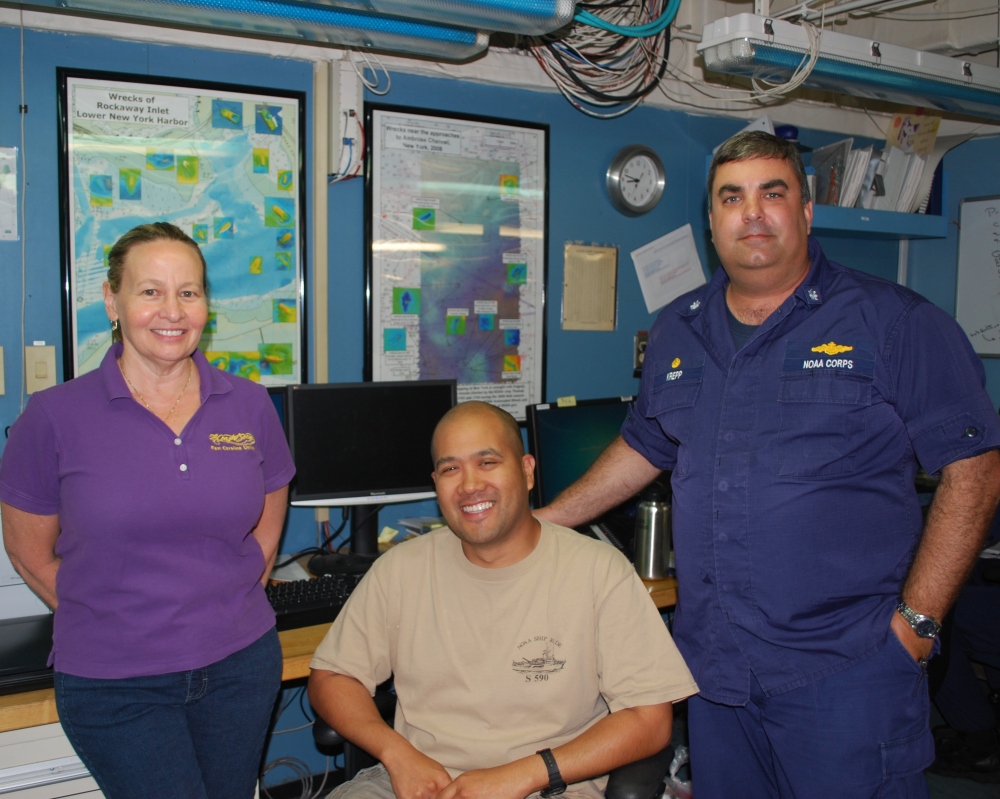
Honoring the memory of the 20 USCS crew members who perished the morning of June 21, 1860, the Thomas Jefferson’s newest hydrographer, Ensign Eileen Pye, laid a memorial wreath on the waters above the sunken wreck of the U.S. Coast Survey Steamer Robert J. Walker.

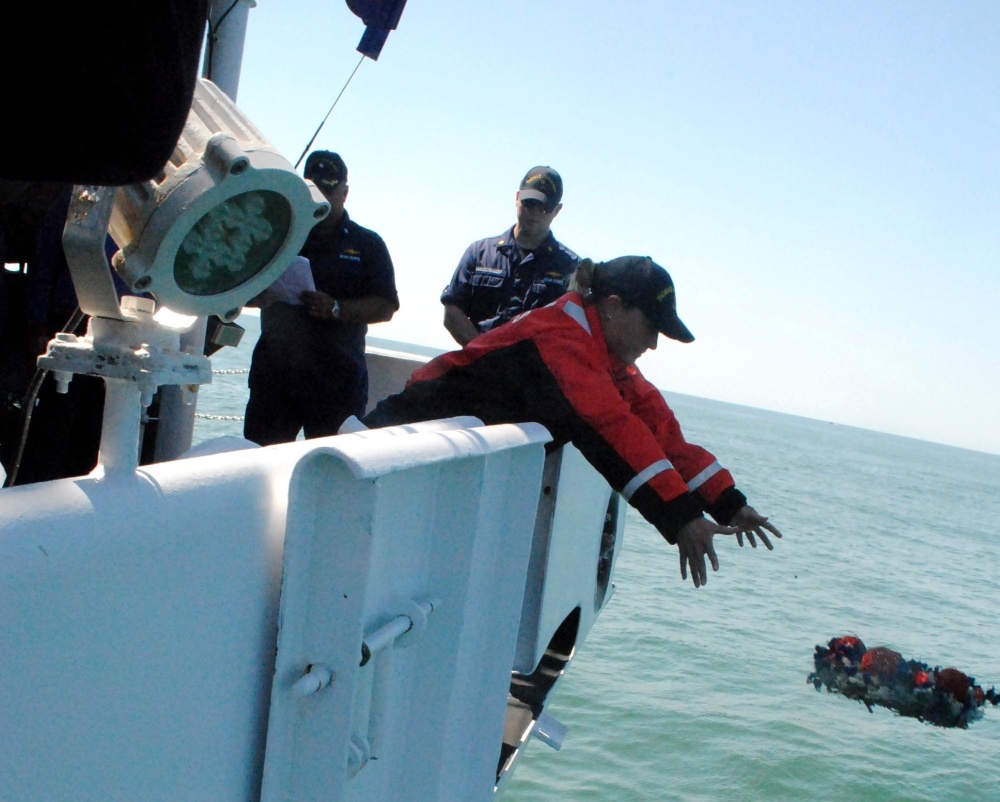

At the same time the Thomas Jefferson was memorializing the crew at sea, NOAA employees gathered at NOAA offices in Maryland. Rear Admiral Gerd Glang, director of NOAA’s Office of Coast Survey, led the ceremony and reminded the assembled group, “With leadership comes an obligation to honor these men who made the ultimate sacrifice in service to the nation.”
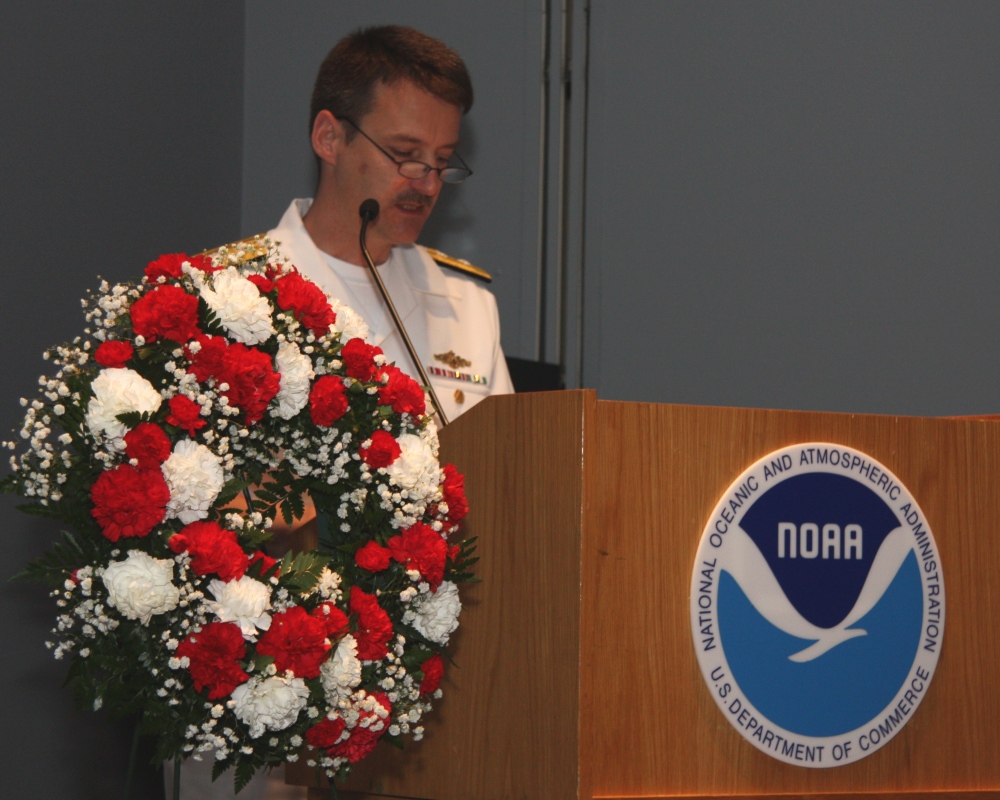
David Moehl, a senior survey technician on the NOAA Ship Ferdinand R. Hassler, rang an historic hydrographer’s bell, once for every man who died that day, as Cheryl Oliver, the president of the U.S. Coast and Geodetic Survey Historical Society, read each man’s name.
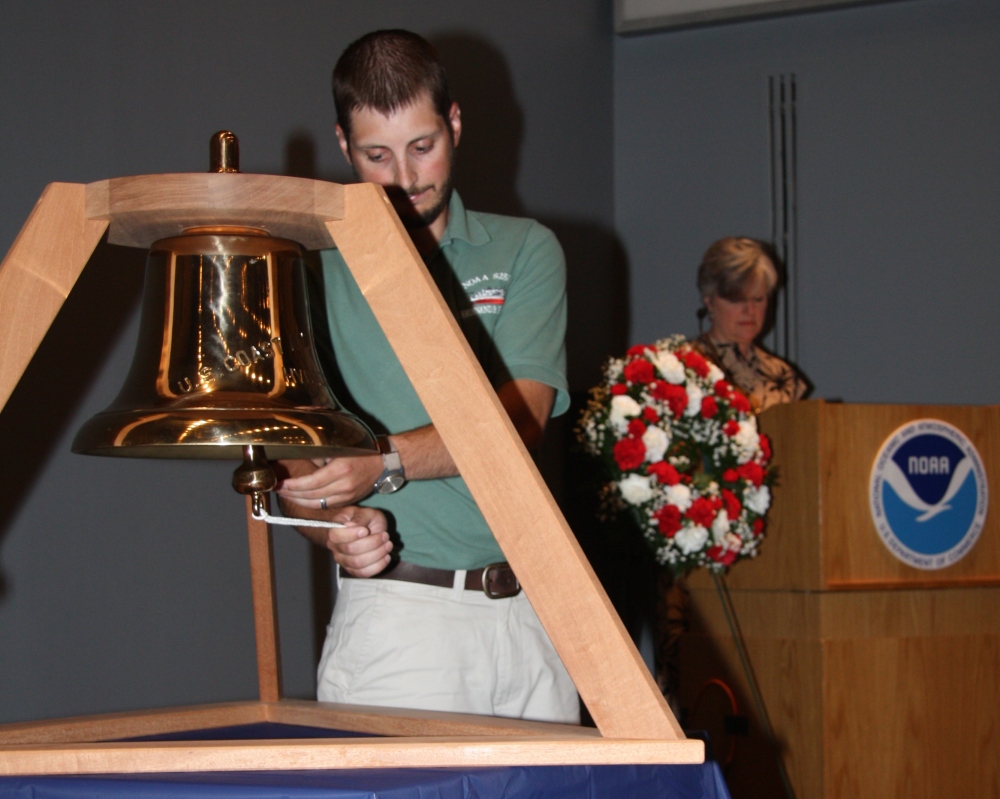
Rear Admiral Michael Devany, director of NOAA’s Office of Marine and Aviation Operations, talked of connections. “Despite the time that has passed, today’s NOAA employees, mariner and non-mariner alike, share a unique connection with these sailors. The common heritage of love for the sea and sky bond us with the men of the Robert J. Walker regardless of time.”
“The sacrifice paid by these 20 men reminds us of the dangers intrinsic with operations at sea,” Devany said. “We cannot go back and undo the events that took the Robert J. Walker and her crew from us, but I believe they would be honored to know the work they set out to accomplish over a century and a half ago continues today by NOAA ships and the people of NOAA.”
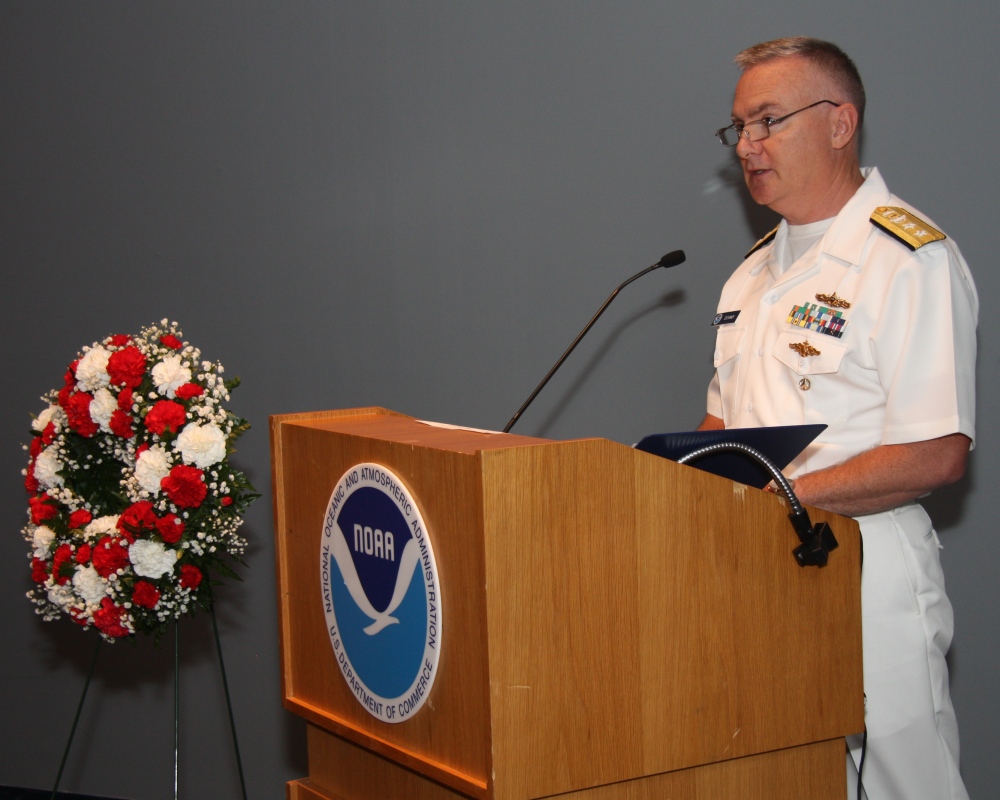
David Kennedy, deputy under secretary for operations at NOAA, spoke to the heart of the accident: the need to honor all federal employees. Kennedy explained that the men who died were not the scientific or naval elites: “They were the the guys working below deck.”
“At NOAA, we celebrate the science, we tout the satellites and the surveys — and, above all, we are always mindful that we are a team. The stewards and cooks and firemen from 1860, and the technicians and support staff today, are the reasons we are able to accomplish what we do.”
“The crew of the Robert J. Walker, and the people who have followed them on hundreds of thousands of hydrographic surveys since, have served the United States government in our many hours of need. Their work – your work – has improved the welfare of our people over the centuries, as our hydrographic missions improve the safety of navigation.”
“Today, we thank and publicly honor the crew of the Robert J. Walker for their service to the nation. And, in that,” Kennedy told the NOAA hydrographers, technicians, and support staff, “we honor and thank you all as well.”
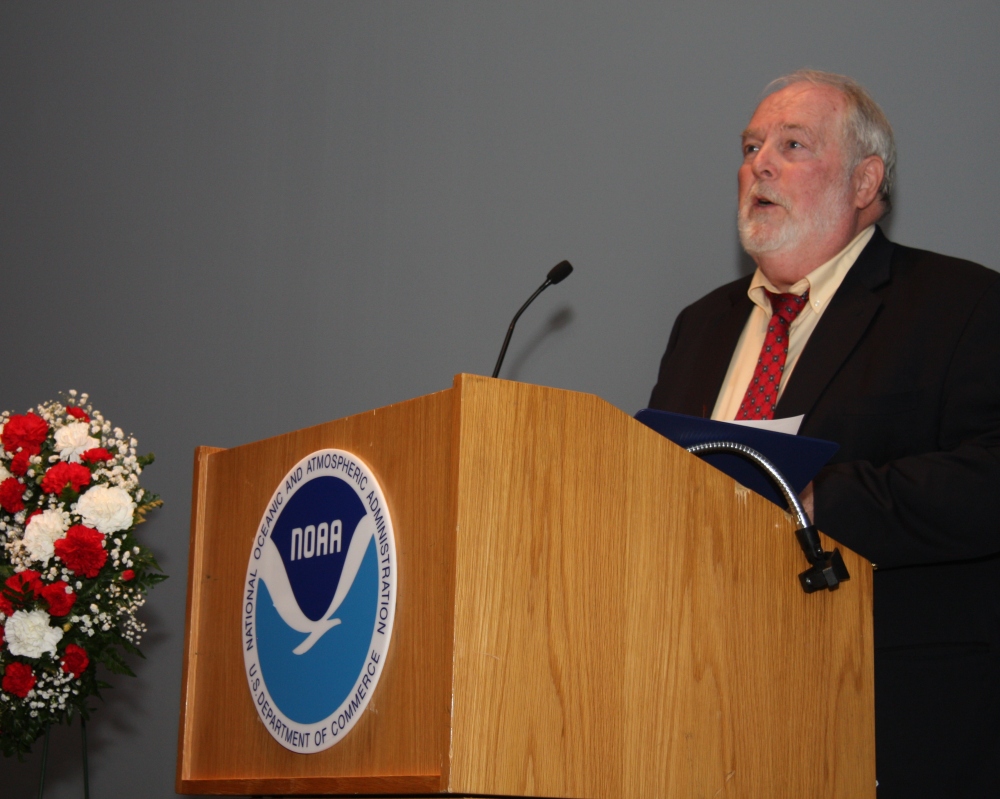
Two other federal programs are also involved in the nation’s hydrography. We were very pleased that representatives from the National Geospatial-Intelligence Agency attended the NOAA event. In a show of solidarity, the hydrographic office of the U.S. Navy held their own simultaneous ceremony at their location in Stennis, Miss.
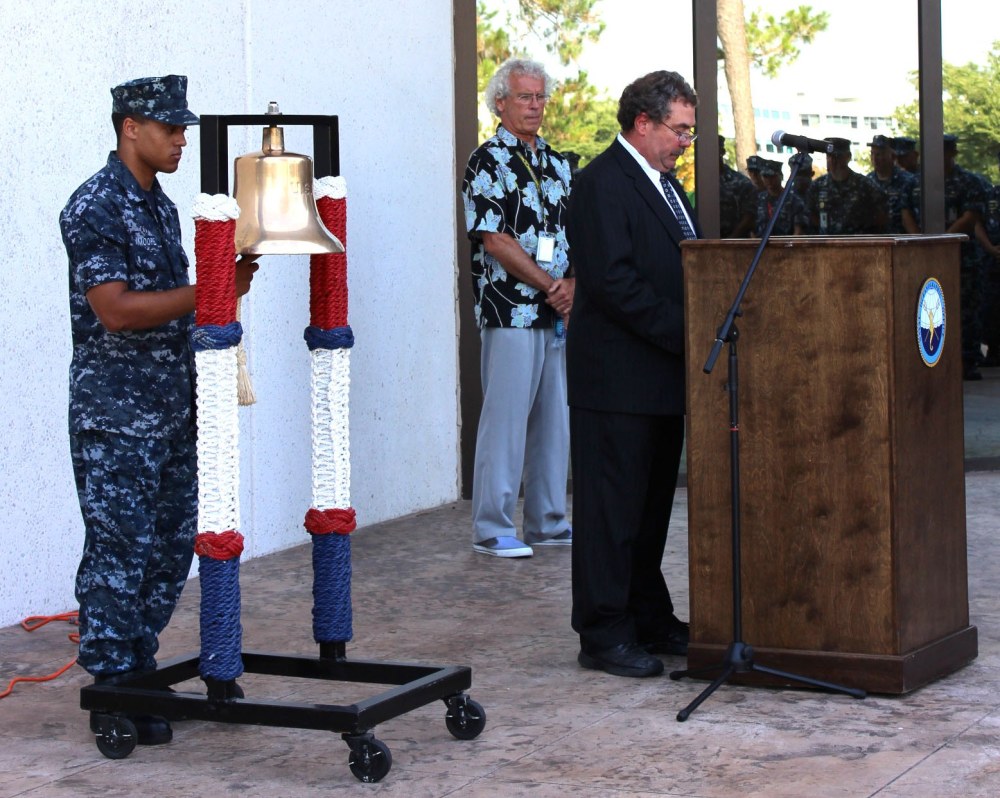
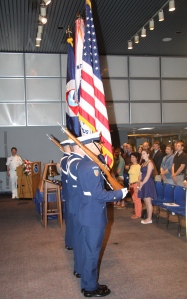
Rear Adm. Glang also read from a letter that Admiral R.J. Papp, Commandant, U.S. Coast Guard, wrote to Dr. Kathryn Sullivan, NOAA’s acting administrator. “I want to add my tribute to the memory of the sailors who perished in that accident, ” Papp wrote. “Coast Guardsman are always saddened by the loss of life at sea and especially so when those lost were working to make the lives of other mariners safer by charting the waters of the United States.” (Read his full letter, especially for more about the history of the Walker.)
In honor of the strong ties — historical and contemporary — between NOAA and the Coast Guard, a USCG Honor Guard proudly posted and retired the colors for the ceremony.
Back in 1860, the U.S. Coast Survey never published the names of the lost crew members. However, the New York Times, on June 23, 1860, wrote about the accident and published this list.
“The following list of the missing crew has been supplied by Mr. CHARLES GIFFORD, Quartermaster on board of the Walker, to whom we are also indebted for the particulars of the collision:
Marcus (or Marquis) Buoneventa, ward-room steward.
Michael M. Lee, ship’s cook, (colored.)
James Patterson, ward-room cook, (colored.)
Henry Reed, second mate.
Timothy O’Connor, second gunner.
John Driscol, seaman.
Michael Olman, seaman.
George W. Johnson, son of Mr. Johnson, the actor.
Charles Miller, ordinary seaman.
Robert Wilson, seaman.
John M. Brown, captain of after guard.
Jeremiah Coffee, cooper.
Cornelius Crow, landsman.
John Farren, fireman.
James Farren, fireman.
Samuel Sizer, fireman,
George Price, fireman.
Joseph Bache, fireman.
Daniel Smith, fireman.
Peter Conway, fireman.
Total 20.”
For more information, see nauticalcharts.noaa.gov/RobertJWalker.
Also, listen to this recent National Ocean Service podcast interview of Rear Admiral Glang.
There’s a fascinating story behind (literally) the painting of the Walker. See A Good Story, from the Mariners Museum blog.
UPDATE: AUG 28, 2013: NOAA announced that a wreck located off the New Jersey shore has been positively identified as the Robert J. Walker. This summer, a private-public collaboration sought to find the Walker, as experts zeroed in on where the Walker was reported to have gone down. Those experts included Joyce Steinmetz, a maritime archeology student at East Carolina University, who briefed NOAA staff on government records and newspaper accounts she had unearthed in her studies. Capt. Albert Theberge (NOAA, ret.), from the NOAA Central Library, brought his research of the early years of the U.S. Coast Survey, including correspondence between various Coast Survey officials and the ship’s officers. James Delgado, director of NOAA’s Maritime Heritage program, added his expertise gathered from years of discovering and documenting wrecks. Vitad Pradith, a physical scientist with NOAA’s Office of Coast Survey, provided technical expertise in using NOAA’s multibeam and sidescan sonar systems — onboard the NOAA Ship Thomas Jefferson — to locate and image underwater structures. (Thomas Jefferson was in the area conducting post-Sandy hydrographic surveys.)
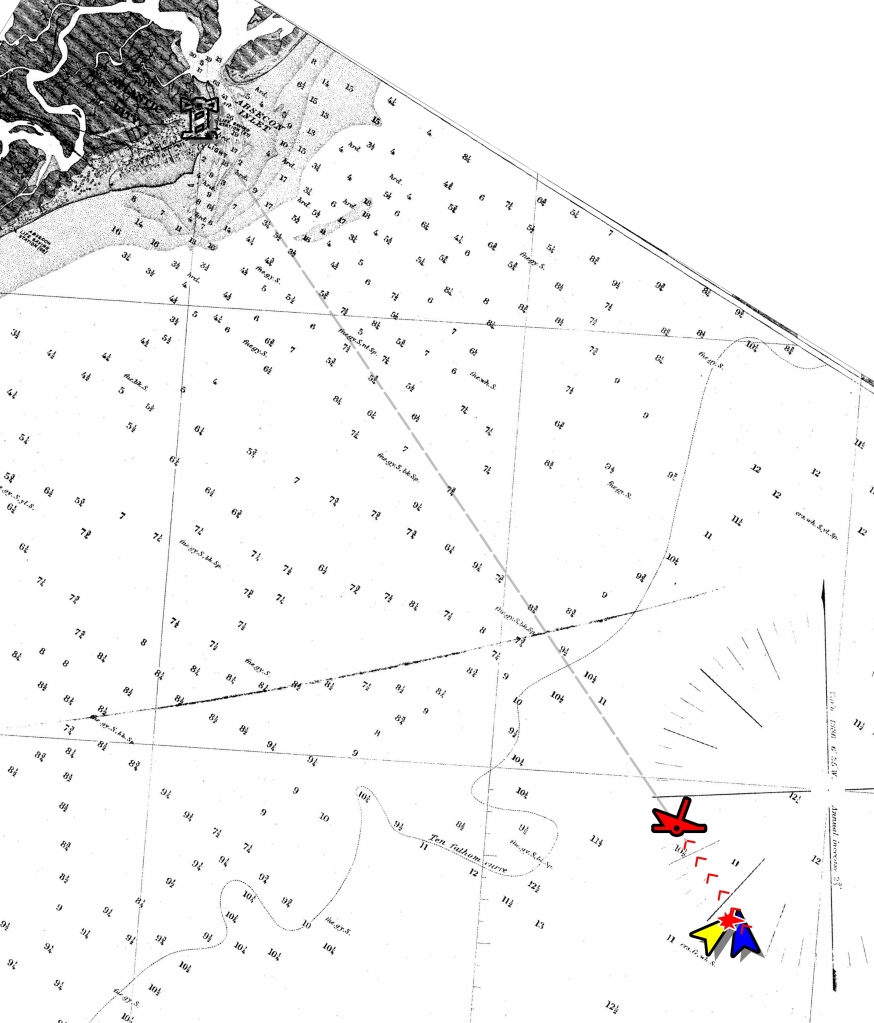
“Before this identification was made, the wreck was just an anonymous symbol on navigation charts,” said Rear Admiral Gerd Glang, director of Coast Survey. “Now, we can truly honor the 20 members of the crew and their final resting place. It will mark a profound sacrifice by the men who served during a remarkable time in our history.”
NOAA’s intent is not to make the wreck a sanctuary or limit diving, but to work with New Jersey’s wreck diving community to better understand the wreck and the stories it can tell.
“We want to enhance the dive experience and support the dive industry with enhanced access to this wreck,” said James Delgado, director of maritime heritage for NOAA’s Office of National Marine Sanctuaries. “New Jersey is home to some of the most accomplished wreck divers who not only understand history and wrecks, but who have also been in the forefront of wreck exploration. We look forward to working with them on the Walker.”
For more information, see the National Marine Sanctuaries report, Rediscovering the Walker.
Listen to a podcast from two of the experts who found the Walker. See video of what the divers found, on Finding the Robert J. Walker.

Nice tribute to those who served so long ago, but it is also fitting to remember those who gave it their all in more recent times. Fortunately, they are few, but no less worthy of recognition.
So good to have brought in the names and possitions they served so let us not forget Erik Koss, ordinary seaman of the NOAA Ship Rainier.
An impressive and most suitable memorial to all those, past and present, who have continuously provided a critical and seldom recognized vital service to mariners around the world.
BRAVO ZULU!
. Steven van Westendorp
Captain, US Navy ret)